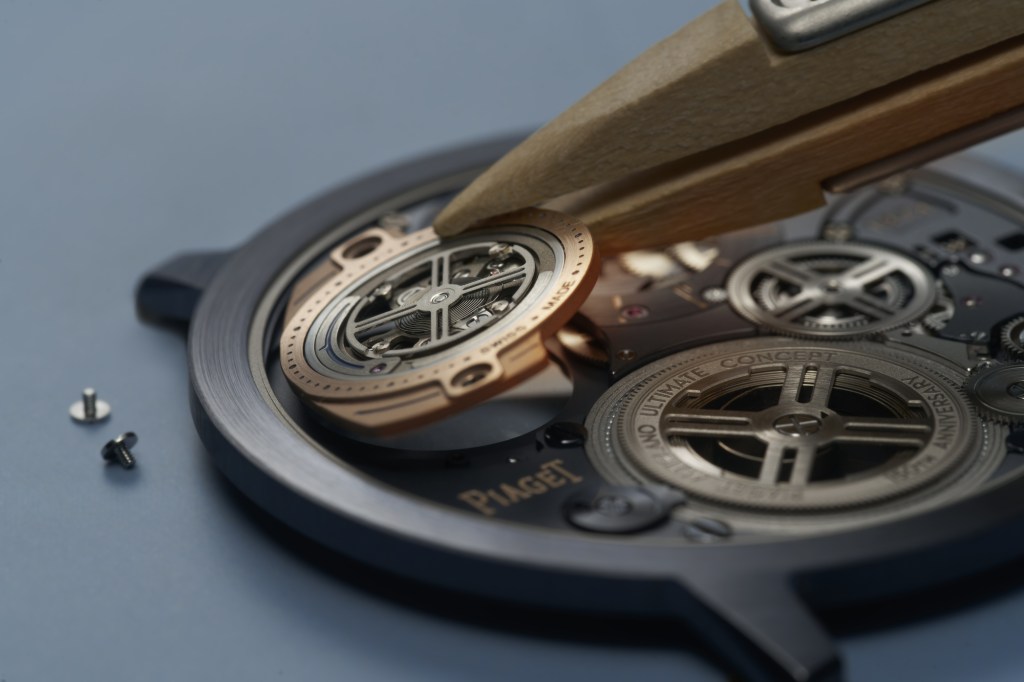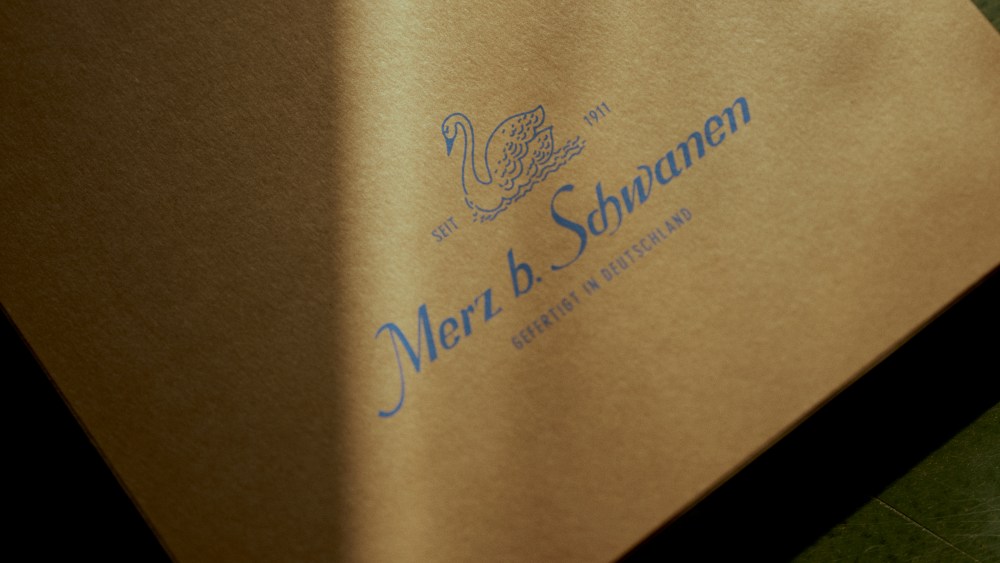The second chapter of Piaget’s 150th anniversary could be titled “Less Is Less.”
That’s how the Altiplano Ultimate Concept Tourbillon, or AUC Tourbillon, the brand is revealing Tuesday could be summarized: less watch case, less sapphire and, most importantly, less movement thickness in a record-beating feat.
Inside a 2mm thick cobalt-alloy case lives the 1.49mm 970P-UC tourbillon caliber, wedged between two whisper-thin slices of sapphire.
So forget reinventing the wheel. What had to be done to get a watch that’s as thin as a coin was no less than “reinvent everything,” said Piaget chief executive officer Benjamin Comar.
While many will home in on the news that this breaks the record set by Bulgari in 2018 at 3.95mm, with a 1.95mm movement in the Octo Finissimo Tourbillon Automatique, the Piaget executive said that was only the cherry on the cake.
“The first emotional moment for us all was when the beating heart of the tourbillon worked for the first time, then when the watch passed all the technical approvals and was finally in front of us,” the executive said.

And that came with a bittersweet twinge for the teams who worked on the development, added Rémi Jomard, the watchmaker’s products and innovation director.
“The parallel between the technical records and the people who made it possible can be felt when you look at the living mechanism,” he said. “It’s sadness and beauty because the original conceptor of the AUC retired in March and this was his crazy idea. In La-Côte-Aux-Fées, there is really a familial and historical dimension.”
The new record-setting tourbillon is the culmination of a six-year process that started with the 2018 launch of the Altiplano Ultimate Concept, which tapped into the house’s penchant for ultra-thin components initiated by founder Georges-Edouard Piaget.
That timepiece, which scooped the “Aiguille d’Or” top gong at the 2020 Grand Prix d’Horlogerie de Genève, had already taken six years to develop.
“After [that watch] was steady and improved, the teams started to think about their next move,” recalled Comar. “They wanted to challenge themselves with a new victory, adding a tourbillon in the AUC.”
That was easier said than done.
“The paradox in this project was that when you work on a complication, it automatically takes more space than a non-complication movement,” Jomard said. “So you have to choose whether you want to do more with the same, or do the same with less.”
What the planned watch amounted to was more with less — and do it in time for the anniversary, too.
It took no less than 70 versions of the tourbillon cage, 15 versions of the anchor and 30 versions of the case frame to arrive at the final structure.
And the development team was nowhere near done, with 90 percent of the original components needing to be redesigned over two-and-a-half years.
Ultimately, only a few things in the AUC Tourbillon stayed true to its predecessor.
There’s the position of the watch components, with a slightly off-center hours and minute dial, a tourbillon at 10 o’clock with the seconds indicator engraved on its ring. Its case back serves as the movement mainplate, in effect fusing them together, and the integrated crown requires a dedicated stylus that contains a gear reduction and torque control system.
One concept that stands out in the new AUC is the way the tourbillon, mostly made in titanium, is held in place at the perimeter by a ceramic ball-bearing that drives the one-minute rotation. Removing the bridges was only one of myriad ways the teams chipped away at the thickness, one micron at a time.

Another is the 40-hour power reserve, which required a made-to-measure mainspring with a slightly increased blade thickness to deliver the additional energy — a tourbillon consumes around 25 percent more than a fixed regulator — and the use of ball bearings instead of pivots nearly everywhere to decrease friction.
According to Jomard, even the work teams and machinery had to be reexamined to get there. “Teams were 100 percent dedicated to subsections and we parallelized development to conceive, make and test different concepts,” he explained. “We parceled out the conception phase, which meant also dividing up responsibilities.”
Tentatively priced at 650,000 Swiss francs, the end result is as much about technical mastery as it is aesthetically pleasing, he continued.
“It has to be wearable and desirable,” Jomard said. “What we’d like people to remember is that we stay rooted in our house R&D that tries to combine mastery of the technical expertise required for ultra-thinness and the product dimension of being in service of an aesthetic.”
And with front and case back made of sapphire thinned down to 0.2 and 0.16 millimeters, respectively, the flash of one’s wrist seen through the tourbillon is a reminder of that human touch.
Behind this combination he defined as “extravagance and allure” is the hand of artistic director Stéphanie Sivrière, who helms the high jewelry and watchmaking designs for the house.
Blue and gold were chosen as the colors, with a midnight hue for the former offsetting the metallic elements, including steel-toned visible parts, inscribed with the model name.
At the micron, or a thousandth of a millimeter, scale of the components, any decoration could result in deformation. The wheels, made of four arms instead of six, had to be diamond polished and chamfered by hand.
In the anniversary year, showcasing the brand’s prowess is all the more essential in order to help navigate the challenging economic landscape, in addition to keeping an even split between watches and jewelry.
“For us, it’s in keeping with our past DNA of ultra-thin mastery, so it’s not something we just conquered,” Comar said. “Innovation isn’t the only important thing. Consistency is also key and we have to activate the two at the same time.”


